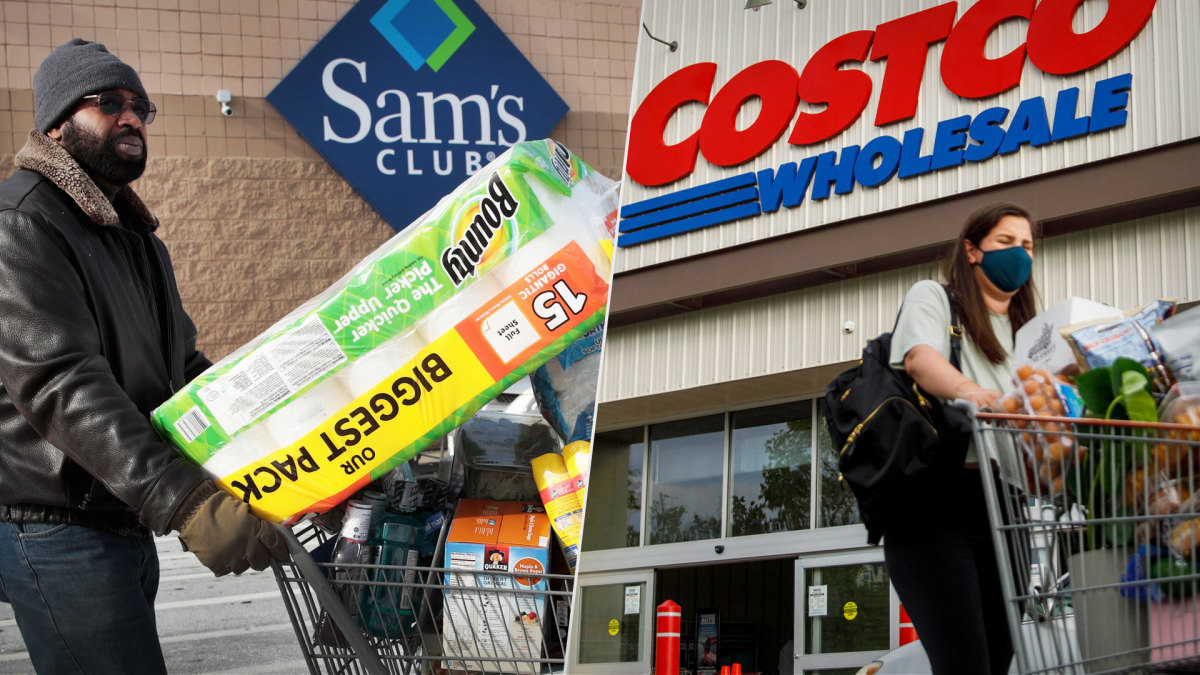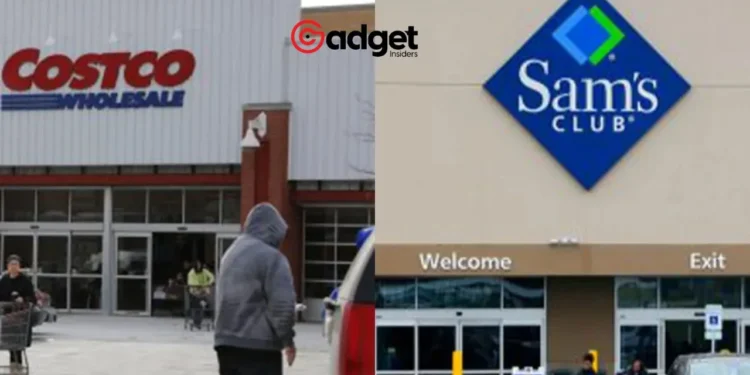In the realm of warehouse clubs, Costco and Sam’s Club stand as titans, embroiled in a rivalry reminiscent of the fierce competition between Coca-Cola and PepsiCo, Lowe’s and Home Depot, and Target and Walmart. This competitive landscape is sharply defined by the unique business model of warehouse clubs, where membership fees create an environment of exclusivity and loyalty.
Unlike the relatively fluid brand allegiances seen in other retail sectors, the Costco versus Sam’s Club dynamic is more rigid, with customers less likely to cross the aisle due to the commitment involved in membership fees.

A New Chapter in the Warehouse Club Saga
Sam’s Club, a division under Walmart’s vast retail empire, has recently broken its expansion hiatus, announcing ambitious plans to open over 30 new warehouse clubs across the United States in the coming years.
A dramatic shift away from Walmart’s former focus is being heralded by the news, which may have been prompted by impressive same-store growth data at current Sam’s Club stores.
The expansion blueprint includes the inauguration of a flagship store in Florida by 2024, alongside a strategic overhaul of its supply chain with the introduction of five new fulfillment and distribution centers, equipped with state-of-the-art automation, slated to commence operations in Georgia by the third quarter of 2023.
The new Sam’s Club outlets promise an enhanced shopping experience, boasting larger footprints of approximately 160,000 square feet and featuring an array of specialized departments such as a seafood/sushi island, full-service floral, walk-in dairy, and fresh coolers, and expanded healthcare spaces complete with private consultation rooms and dedicated centers for hearing and optical needs.
Additionally, many of these locations will offer ancillary services including fuel stations and liquor sales, reflecting a holistic approach to meet the diverse needs of its members.
Costco has an answer for Sam's Club's expansion plan https://t.co/MvWIVzxZdR
— TheStreet (@TheStreet) April 7, 2024
Costco Responds with Measured Growth
In contrast, Costco’s expansion strategy, as detailed by former CFO Richard Galanti, embodies a calculated approach, emphasizing steady growth while maintaining the high standards of operation and member satisfaction that have been the hallmark of its success.
Costco’s expansion trajectory has been stable, with the company intending to open roughly 25 to 30 new locations each year. This is despite the fact that the pandemic caused a delay.
This conservative yet consistent expansion plan has allowed Costco to navigate the challenges of rapid growth, ensuring that each new store maintains the quality and service levels that members expect.
For 2024, Costco has adjusted its expansion plans slightly, targeting the opening of 28 new locations, a slight dip from the initially projected 31 due to delays pushing three openings to 2025. This strategic adjustment notwithstanding, Costco is poised to maintain a competitive edge in the warehouse club growth race.

Financial Fortitude and Future Outlook
The warehouse club sector continues to be a bright spot in the retail landscape, with both Costco and Sam’s Club showcasing robust financial performances. Costco, in particular, has enjoyed an 8.1% uptick in its stock value in 2024, building on a remarkable 44.6% gain in 2023.
Sam’s Club’s parent company, Walmart, has not been far behind, with a commendable 13.9% increase in 2024, adding to an 11.2% rise in the previous year. The ongoing expansion efforts by Sam’s Club and Costco are not merely about adding new locations but signaling a deeper commitment to innovation, customer satisfaction, and strategic growth.
As they continue to evolve, these warehouse giants are set to redefine the shopping experience for millions of members, underlining the importance of adaptability and forward-thinking in the competitive retail sector.










